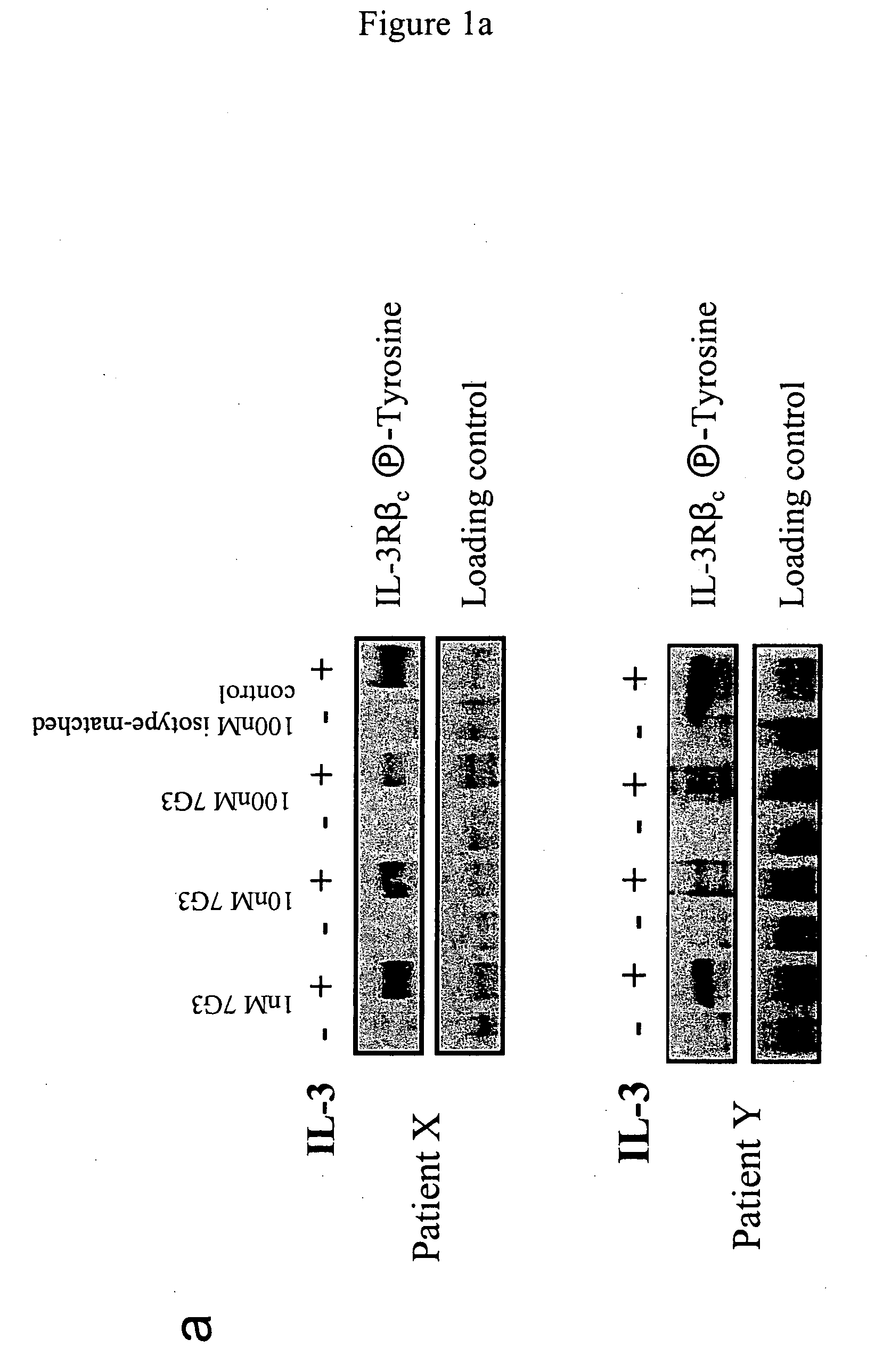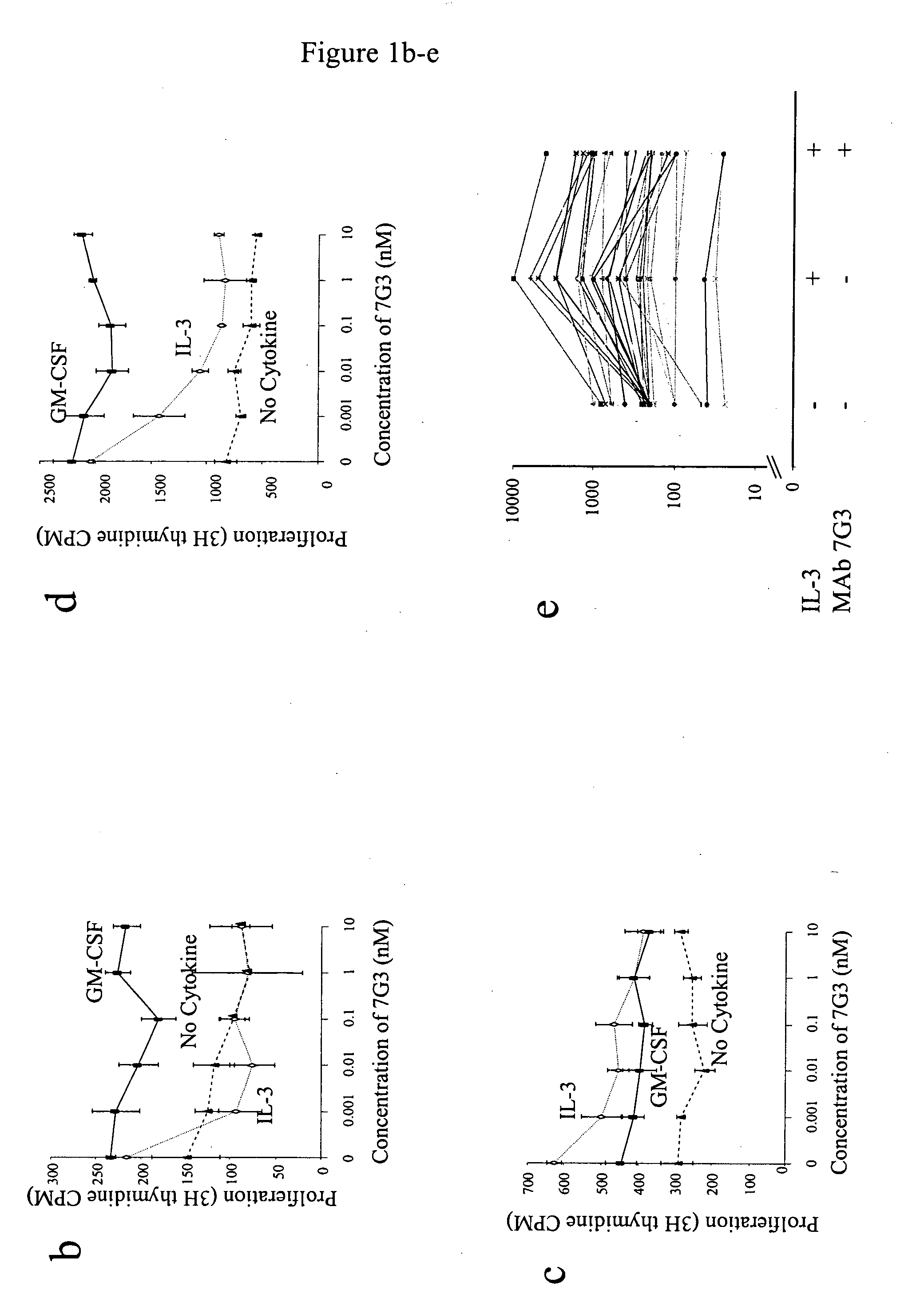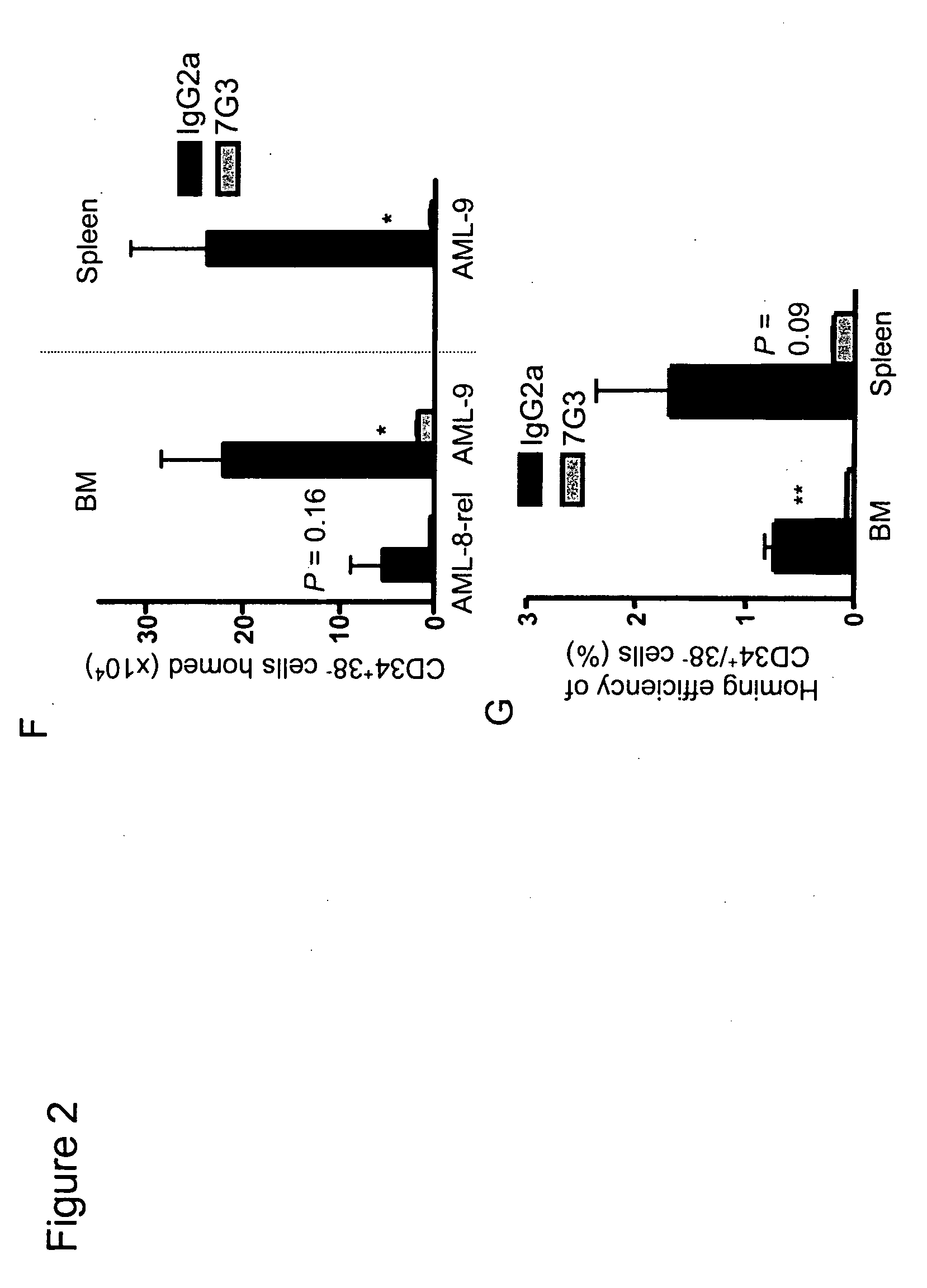Method of inhibition of leukemic stem cells
a stem cell and leukemic technology, applied in the field of leukemic stem cell inhibition, can solve the problems of minimal residual disease occurrence, poor survival, and less effective conventional chemotherapeutics that target proliferating cells, and achieve the effect of enhancing fc effector function
- Summary
- Abstract
- Description
- Claims
- Application Information
AI Technical Summary
Benefits of technology
Problems solved by technology
Method used
Image
Examples
example 1
[0088]This Example demonstrates the ability of MAb 7G3 to exploit the overt differences in CD123 expression and function between AML-LSCs and HSCs. MAb 7G3 inhibits the IL-3 signaling pathway and proliferation of primary AML cells. In addition, the homing and engraftment of AML blasts in the NOD / SCID xenograft model is profoundly reduced by MAb 7G3, and LSC function is inhibited.
Methods
AML Patient Samples, Normal Hematopoietic Cells, and Cell Lines
[0089]Apheresis product, bone marrow or peripheral blood samples were obtained from newly diagnosed and relapsed patients with AML. Patient samples were collected after informed consent according to institutional guidelines and studies were approved by the Royal Adelaide Hospital Human Ethics Committee, Melbourne Health Human Research Ethics Committee, Research Ethics Board of the University Health Network, and the South Eastern Sydney & Illawarra Area Health Service Human Research Ethics Committee. Diagnosis was made using cytomorphology,...
example 2
[0119]CSL360 is a chimeric antibody obtained by grafting the light variable and heavy variable regions of the mouse monoclonal antibody 7G3 onto a human IgG1 constant region. Like 7G3, CSL360 binds to CD123 (human IL-3Rα) with high affinity, competes with IL-3 for binding to the receptor and blocks its biological activities.33 The mostly human chimeric antibody CSL360, can thus potentially also be used to target and eliminate AML LSC cells. CSL360 also has the advantage of potential utility as a human therapeutic agent by virtue of its human IgG1 Fc region which would be able to initiate effector activity in a human setting Moreover, it is likely that in humans it would show reduced clearance relative to the mouse 7G3 equivalent and be less likely to be immunogenic. The mechanisms of action of CSL360 in treatment of CD123 expressing leukemias may involve 1) inhibition of IL-3 signalling by blocking IL-3 from binding to its receptor, 2) recruitment of complement after the antibody ha...
example 3
[0132]The ubiquitous expression of CD123 on AML cells including LSC and the evidence implicating IL-3 having an important role in the etiology of AML suggested that the ability to block IL-3Rα function would be critical for any therapeutic activity of an antibody targeting IL-3Rα such as 7G3. In this example, it is demonstrated somewhat surprisingly, that the ability of 7G3 to inhibit the engraftment or repopulation of NOD / SCID mice by AML patient samples is at least partially dependent upon the effector function responses elicited by the Fc domain of 7G3. Also, other IL-3Rα antibodies that do not significantly inhibit IL-3Rα function also block engraftment and hence demonstrate therapeutic activity in the NOD / SCID mouse model of AML.
Methods
F(ab)′2 Fragment Preparation
[0133]F(ab)′2 fragments for 6H6, 9F5 and 7G3 were derived by pepsin cleavage using immobilised pepsin-agarose (22.5 U pepsin agarose / mg antibody) incubated with antibody at 37° C. for 2 hr. Digestion was quenched by pH...
PUM
| Property | Measurement | Unit |
|---|---|---|
| Cytotoxicity | aaaaa | aaaaa |
| Interaction | aaaaa | aaaaa |
| Chemotherapeutic properties | aaaaa | aaaaa |
Abstract
Description
Claims
Application Information
 Login to View More
Login to View More - R&D
- Intellectual Property
- Life Sciences
- Materials
- Tech Scout
- Unparalleled Data Quality
- Higher Quality Content
- 60% Fewer Hallucinations
Browse by: Latest US Patents, China's latest patents, Technical Efficacy Thesaurus, Application Domain, Technology Topic, Popular Technical Reports.
© 2025 PatSnap. All rights reserved.Legal|Privacy policy|Modern Slavery Act Transparency Statement|Sitemap|About US| Contact US: help@patsnap.com



